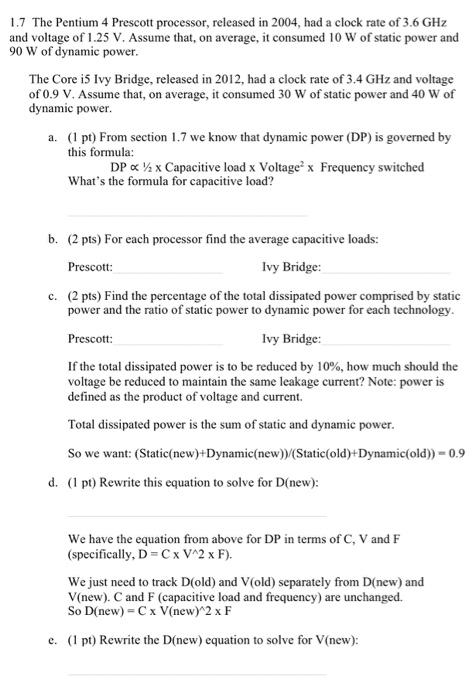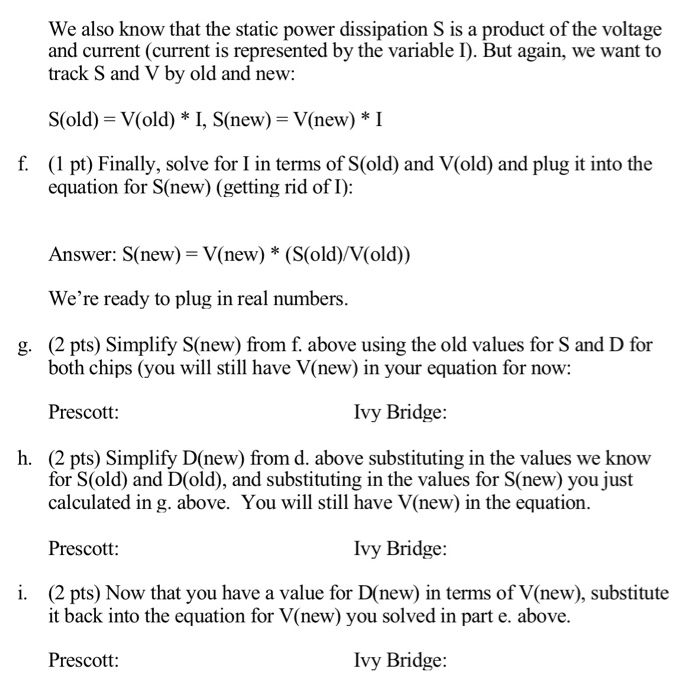1.7 The Pentium 4 Prescott processor, released in 2004, had a clock rate of 3.6 GHz and voltage of 1.25 V. Assume that, on average, it consumed 10 W of static power and 90 W of dynamic power. The Core i5 Ivy Bridge, released in 2012, had a clock rate of 3.4 GHz and voltage of 0.9 V. Assume that, on average, it consumed 30 W of static power and 40 W of dynamic power. a. pt) From section 1.7 we know that dynamic power (DP) is governed by this formula: DP x Capacitive load x Voltage x Frequency switched What's the formula for capacitive load? b. (2 pts) For each processor find the average capacitive loads: Prescott: Ivy Bridge: (2 pts) Find the percentage of the total dissipated power comprised by static power and the ratio of static power to dynamic power for each technology. c. Prescott: Ivy Bridge If the total dissipated power is to be reduced by 10%, how much should the voltage be reduced to maintain the same leakage current? Note: power is defined as the product of voltage and current. Total dissipated power is the sum of static and dynamic power. So we want: (Static(new)+Dynamic(new) (Static(old)+Dynamic(old))-0.9 d. pt) Rewrite this equation to solve for D(new): We have the equation from above for DP in terms of C, V and F (specifically, D -Cx VA2 x F) We just need to track D(old) and V(old) separately from D(new) and V(new). C and F (capacitive load and frequency) are unchanged. So D(new)-Cx V(new)*2 x F e. (1 pt) Rewrite the D(new) equation to solve for V(new): We also know that the static power dissipation S is a product of the voltage and current (current is represented by the variable I). But again, we want to track S and V by old and new S(old)- V(old) * I, S(new)- V(new) * I f. (1 pt) Finally, solve for I in terms of S(old) and V(old) and plug it into the equation for S(new) (getting rid of I) Answer: S(new)-V(new) * (S(old)/V(old)) We're ready to plug in real numbers (2 pts) Simplify S(new) from f. above using the old values for S and D for g. both chips (you will still have V(new) in your equation for now: Prescott Ivy Bridge h. (2 pts) Simplify D(new) from d. above substituting in the values we know for S(old) and D(old), and substituting in the values for S(new) you just calculated in g. above. You will still have V(new) in the equation Prescott: (2 pts) Now that you have a value for D(new) in terms of V(new), substitute Ivy Bridge i. it back into the equation for V(new) you solved in part e. above Prescott: Ivy Bridge








